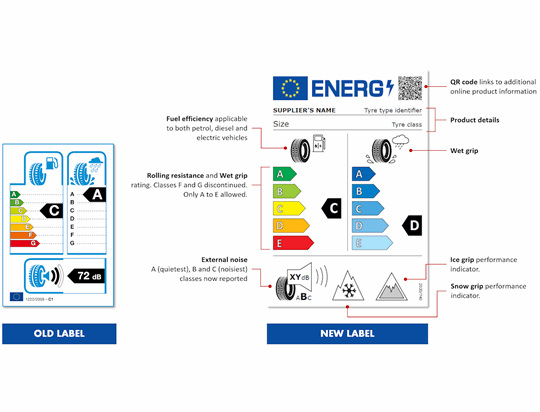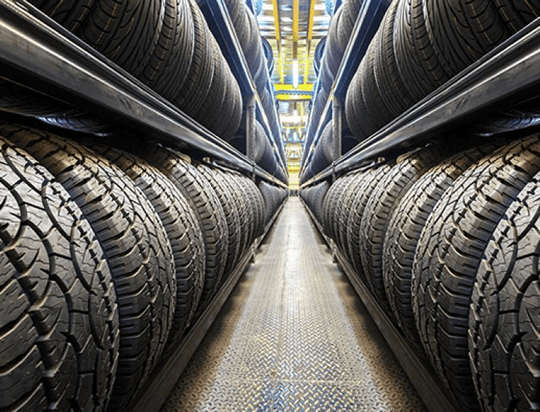
1. How to read your tyre size
Tyre sizes explained and made easy with these tips from First Stop.

2. Tyre labelling explained
All passenger tyres must be labelled with an official tyre label. This label contains information about three important criteria that form the basis for evaluating tyre performance: wet grip, fuel efficiency and exterior noise.

3. Check your tyre pressure
Maintaining correct tyre inflation pressure is essential and avoids premature or uneven wear. As tyres naturally lose pressure over time, you need to refill them regularly. Driving on the correct tyre pressure will extend the life of your tyre, improve vehicle safety and maintain fuel efficiency.

4. Check your tread depth
More tread means more grip. It’s as simple as that. Be aware that even though the legal limit is 1.6mm, anything under 3mm can seriously compromise performance and safety.

5. Looking after your tyres
Tyres are all that stand between you and potentially life threatening situations on the road. Worn or underinflated tyres increase your stopping distance and risk of skidding, and will result in higher fuel consumption and significantly reduced lifespan.

6. Stopping distance
Your tyres are the only link between your vehicle and the road – a critical contact area no bigger than the palm of your hand. They provide the vital grip for braking and the control of your steering – essential to you stopping safely in an emergency. The distance it takes you to stop can be the difference between life and death.

7. Tyre maintenance
Tyres are essential part of your vehicle to ensure safety of the road when you are travelling. All tyres age and wear out.
Proper maintenance will help extend their life but ultimately the tyre life depends of the driving style and roads driven on.
We at First Stop recommend the following tips in order to carry out maintenance of your tyres on a monthly basis:
Check the Tread Depth of all tyres including the 'spare' tyre.
Check your Tyre Pressures as recommended by your vehicle manufacturer.
Check the Tyre Tread for damage or wear as poor wheel alignment, prolonged under or over-inflation.
Check the Sidewall for uneven wear, tears, cracks or bulges.

8. How to choose a tyre
When helping you choose the right tyres, First Stop will assess the type of vehicle you drive, how often you drive it and the weather conditions you’re most likely to experience.
The right tyres optimise vehicle performance and fuel efficiency, improve safety and last longer.
Whatever you drive, the experts at First Stop can recommend a range of tyres to suit your vehicle and your budget.